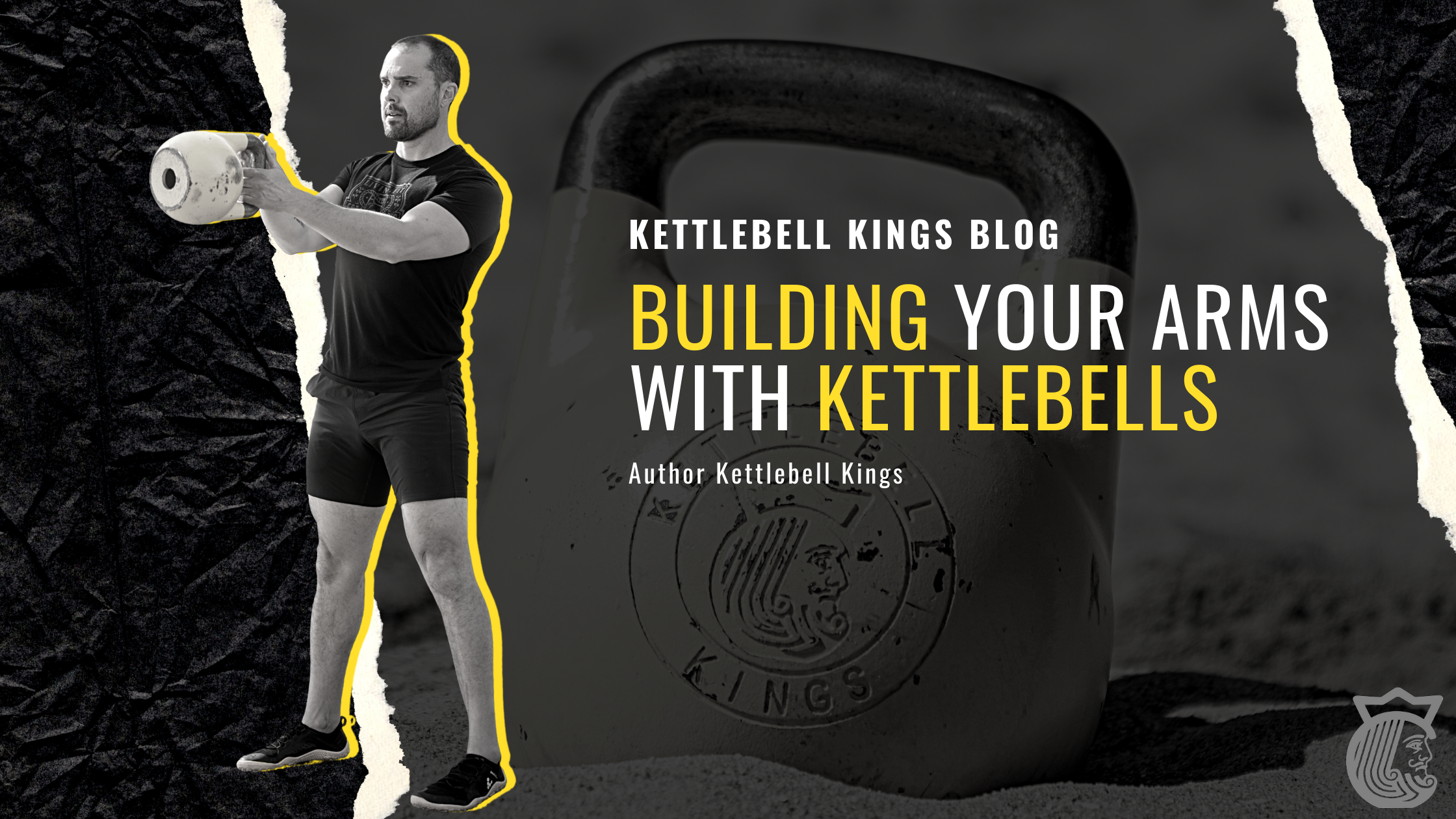I created the Freestyle Kettlebell Pentathlon as a fun workout that ticks all the boxes of human movement, and as a means of friendly competition. It has a scoring system relative to bodyweight and load lifted that rewards effort so you can compete against friends of all sizes, anywhere in the world. You could also use it as a repeatable metric to offer muscle endurance or conditioning performance benchmarks.
This pentathlon is inspired by WKC’s pentathlon — credit is due. A decade ago, I used to compete in WKC kettlebell pentathlons, which were really good, fun events and I’m forever grateful for having been a part of. But having subjected a great many clients to this session over the years, I deemed it more effective to modify for mass consumption. Three of the five WKC events involve a vertical pressing action, which is usually a welcome activity for men, but many women tend to steer away from such pressing volume. The WKC pentathlon involves a jerk, which takes a little too much technical know-how for the everyday kettlebeller. It also involves the push press, which has way too much room for cheating the lift by using the lower legs. The scoring system needed a little upgrading too because the relationship between load lifted and relative body weight percentage is not linear – more on that later.
Is This a Hardstyle Pentathlon?
No, it’s freestyle. Use any style of lifting as long as it’s safe. Besides, it’s impossible to lift with Hardstyle technique for extended reps and sets. As soon as you’re too gassed or exhausted to produce high tension and intra-abdominal pressure with every rep, it ceases to be Hardstyle. Read this blog for a lot more about that. Clearly, high-rep kettlebell work lives in the world of Girevoy Sport. Any trained GS athletes will probably breeze this pentathlon with a good score. But it’s modified enough to give non-GS athletes a sporting chance.
Prerequisites
To perform any lift for max reps in a given time, it’s essential to have complete ownership of each movement and extensive kettlebell lifting experience. Additionally, as a basic safety litmus test, if you can confidently say “yes” to these questions, you’re good to go.
*Can you sit into a deep squat position (body weight) for more than 4 minutes without pain?
*Can you carry your chosen kettlebell overhead for at least 45 seconds without pain?
Freestyle Kettlebell Pentathlon Mechanics
Set timer to 06:00/04:00 x 5. Six minutes working, four minutes resting. Choose one kettlebell and carry out the following five events, in order. Same kettlebell for all five.
1. Get-ups
The kettlebell must make contact with the ground to complete every rep. Carrying out consecutive reps with the same arm is allowed as long as it touches the ground between every rep. If the kettlebell falls to the ground, no rep. How many completed get ups can you perform in 6 minutes?
8 Points per completed rep, ending with ground contact
2. Clean and military press
One clean, one press, one clean, one press, etc. The knees must be locked out and the heels must remain grounded to initiate every press — this is a strict military press, not a push press or jerk. The elbow must fully extend to complete every press. Switch arms or put the kettlebell down as many times as necessary. How many presses can you complete in 6 minutes?
2 Points per completed press
Every rep starts and ends in standing, with hips and knees fully extended. Your butt must travel below parallel for every rep. You can put the kettlebell down as many times as you like. How many squats can you perform in 6 minutes?
1 Point per completed squat
4. Snatches
Change arms or put it down as many times as required. How many snatches can you complete in 6 minutes?
1 Point per completed snatch
5. Overhead carry
Carry your kettlebell overhead with one arm for 6 minutes. Walk in loops, shuttles or walk on the spot. Don’t put it down. Change arms as many times as required. Zero points if an arm change takes more than 5 seconds. You don’t need a judge — just swing it once or twice to change arms and get it back up there using both arms if necessary.
Put it down (or stall during arm change): 0 points
12+ arm changes: 50 points
10-11 arm changes: 75 points
8-9 arm changes: 100 points
6-7 arm changes: 125 points
4-5 arm changes: 150 points
2-3 arm changes: 175 points
1 arm change: 250 points
Manzi Scoring System
Initially, I simply multiplied a lifter’s points by the kettlebell weight, then divided by their body weight. This sounds fair on the surface and is really user-friendly. But after trying and testing this method, a good friend (Graeme Manzi) helped highlight fundamental problems that proved the system inaccurate, unfair and unusable.
Small, light (lean) people were achieving better scores than bigger (lean) people when using the same relative weight kettlebell, to a disproportionate level. This raised the question, “If two people of different sizes use kettlebells that are the same percentage of their body weight, is this a fair pound-for-pound comparison?” This question is decades-old in the world of power lifting and Olympic lifting. According to a plethora of bio-mathematical studies, the lighter people have a distinct advantage due to the relationship between muscle size and muscle diameter. A universal scoring system has to account for this. Refer to “body weight coefficient” below.
I did the pentathlon three times using different kettlebells: 24kg, 28kg and 32kg. The 24kg session was a walk in the park. The 28kg session was quite difficult but still ok to do on any day of the week. The 32kg session was brutal and I was shaking for the next two hours. I left the session feeling truly tested and wanting to improve my ability with this load. My three scores did not reflect this level of effort in the slightest. My 28kg and 24kg scores were both exceptionally high but my 32kg score looked pathetic in comparison, even though the rep count wasn’t that much lower. A good scoring system should not encourage a lifter to take the easy road - it should reward neurological effort. Refer to “relative load coefficient” below.
Another problem with multiplying by load and dividing by body weight is the fact that, to a small person, the difference between 12kg and 16kg feels a lot more than the difference between a 24kg and a 28kg for a big person. The 4kg difference is a much larger percentage of a small person’s body weight. Therefore, a fair scoring system would offer a non-linear value for different weights of kettlebell as their weight increases. Refer to “absolute load factor” below.
Winners' Enclosure
Thank you so much to some of my clients and friends who’ve been good sports and done this pentathlon to help me fine tune the scoring system, that now reflects athletic ability far better than any other multi-event scoring system I've seen.

Yes, Shaida’s results are legit and her reps were good. Pound-for-pound, she’s one of the mightiest humans I know, and she has the cardiovascular ability to match – rare for a very strong person. She might actually be Kryptonian. I challenge you to beat her score!
Score Calculator
The Manzi scoring system really isn't that complicated if you spend five minutes trying to get your head around it. But to make things simple here's a calculator for you. The following link will take you to a calculator. Just enter your body weight, kettlebell weight, reps and number of arm changes (for the OHC).
FREESTYLE KETTLEBELL PENTATHLON CALCULATOR
I know I’m inviting criticism for daring to use the words “max reps” and “get-up” in the same sentence. Would most of the get-ups performed so far pass a StrongFirst technique test? Of course not. But does it matter? Those standards exist for helping new kettlebell students understand the movement to a teachable level and they outline the optimal technique for lifting maximal load. Is the lift safe and of high value when performed at 3 to 4 reps per minute with a submaximal load by an experienced lifter? Undoubtedly. Consider that in the early days of the get up being included in RKC certifications (pre-2005) the standards were almost as simple as “get-up.” As long as a lifter knows how to drop the kettlebell with conviction — toss it to the side — it’s safe to perform faster than two reps per minute.Speed Get Ups?!
Which Kettlebell Should I Use?
Finding the right kettlebell to achieve your personal best score will take some testing and adjusting. The Manzi Scoring System rewards the extra effort required to lift more load. I recommend the following:
- Working around an injury, lack kettlebell experience or just want to have a play: 15%-20% body weight
- Fit, strong humans who know their way around a kettlebell: 20%-30% body weight
- Kryptonians, Masters of Sport, Jedi Knights: 30%-40% body weight
Strength and honor!
Phil McDougall
IG: @phil.mcdougall
Kettlebell Kings has the most highly & frequently reviewed kettlebells in the world. We have free shipping in the US & Canada (www.kettlebellkings.com), Europe (www.kettlebellkings.eu) . Check out our 4,000 reviews for quality and customer service









